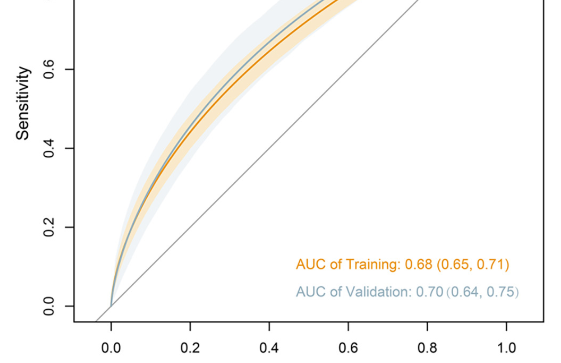Identifying patients at risk of prolonged hospital length of stay after total knee arthroplasty: A real-world study on the creation and validation of a cloud estimator
DOI:
https://doi.org/10.17305/bb.2023.9156Keywords:
Hospital length of stay (LOS), total knee arthroplasty (TKA), prediction, concordance statistic, calibrationAbstract
Accurate prediction of the length of stay for patients undergoing total knee arthroplasty (TKA) is critical for efficient medical resource allocation. This study aimed to create a user-friendly model to assist this estimation process. A secondary analysis was conducted on 2676 patients who underwent elective primary TKA at a tertiary academic medical center in Singapore from January 2013 to June 2014. The eligible patients (n = 2600) were randomly divided into a training cohort (n = 2081) and a validation cohort (n = 519), at a ratio of 4:1. A prolonged hospital stay was defined as exceeding six days. Multivariable logistic regression was used to develop a prediction model, and an online calculator was created to facilitate its application. The model's discrimination power, goodness-of-fit, and clinical applicability were evaluated. Additionally, models using other statistical methods were developed for performance comparison. The model includes predictors such as age, operation duration, history of cerebrovascular accidents, creatinine levels, procedure site, the American Society of Anesthesiologists Physical status, hemoglobin levels, and primary anesthesia type. The model demonstrated robust discrimination power with a C statistic of 0.70 (95% confidence interval, 0.64 to 0.75), satisfactory goodness-of-fit (Hosmer–Lemeshow test, P=0.286), and was applicable when thresholds were between 0.08 and 0.52, based on decision curve analysis. A predictive model was developed that can be used to identify patients who are likely to require an extended stay following TKA. This could assist in planning bed availability and guiding therapeutic decisions.
Citations
Downloads

Downloads
Additional Files
Published
Issue
Section
Categories
License
Copyright (c) 2023 Song Chen, Minfei Qiang, Kunpeng Li, Xiong Wang, Jun Xie, Wei Wang

This work is licensed under a Creative Commons Attribution 4.0 International License.
How to Cite
Accepted 2023-07-05
Published 2024-01-03









